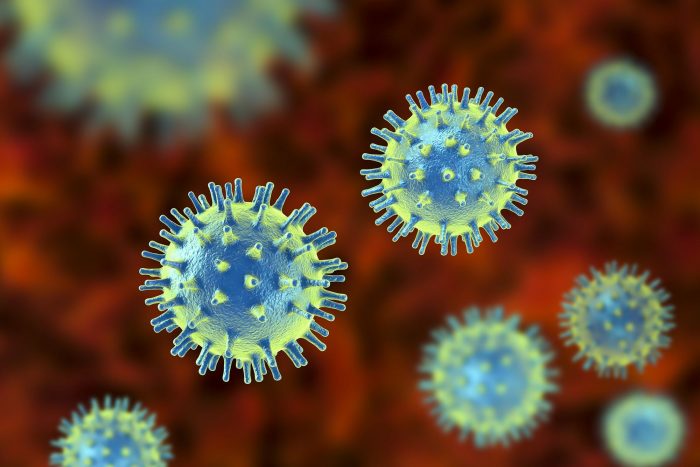Dangerous New Virus Being Studied

The Commentator | On 07, Mar 2021
Did we get your attention with the misleading headline and image?
Welcome to our Journalism class experiment. The virus we’re studying is misinformation and disinformation.
Misleading and deceptive content is being spread from person to person at an alarming rate these days, due to many factors such as the prevalence of social media, a demanding 24-hour news cycle, and an increasingly divided nation.
It can be difficult to identify misinformation and disinformation. First of all, it’s important to note the difference between these two terms. Misinformation is false information that is shared online, regardless of intent. Disinformation, on the other hand, is false information that is created and shared online with the specific intent to deceive.
With this piece, we hope to 1) track just how far one misleading headline can spread (and how quickly) and 2) do our part in educating others to curb the spread of misinformation and disinformation.
Our class needs your help! Please share this article with everyone you know!
Below are the evidenced-backed tips we put together to “stop the spread” of misinformation and disinformation!
How You Can Spot A Fake News Article
- Double-check the URL. Does it look off in some way? Is there a “.co” after the “.com”? Does the logo look slightly different? If so, this is probably fake news.
- Get your proofreading glasses on. If the article’s writing is “sloppy” i.e. featuring errors in spelling, punctuation, and grammar, it’s probably not from a trusted news provider but rather a deceptive actor or organization.
- Google the source. It the article seems like it’s from a questionable source, search that source on a trusted search engine. It may just turn up on a list of sites to avoid.
Recognize the Difference Between Biased, Misleading, and Fake Content
- Watch out for exaggerated or misleading headlines, like the one on this article!
- Educate yourself on Media Bias. Not all sources of information act independently. See the helpful infographic below.
- Fact-check outrageous claims, especially ones shared on social media. Back in October 2020, Rapper Kanye West re-tweeted a graphic showing him receiving more votes than both Biden and Trump in the Kentucky presidential primary. Surprising, to be sure. A quick fact-check would have showed West that he had been duped before he shared the graphic with his millions of followers.

What You Should Do When You Spot Fake Information
- Inform the person who shared it that it’s fake. Do this gently. You don’t want to embarrass or shame anyone. Explain that they may have been deceived and suggest they delete their post.
- Share the truth instead of the lie. Many may be tempted to share misinformation in an attempt to “call it out” as fake. While the intention is good, that will keep the misinformation circulating. Instead, share a corrected screenshot or a link to a trusted fact-checking website to help debunk it. (FactCheck.org, Politifact, and Snopes are some good ones.)
- Report it. It only takes a few seconds, but reporting the post on social media as fake or misleading will go a long way in stopping it from deceiving others.
Check Out These Sources We’ve Compiled
- An op-ed from our own senior writer Ryan Salmon about this important topic: https://commentator.hawkweb.org/archives/5781
- A great PBS documentary we viewed in class: https://www.pbs.org/video/fake-searching-for-truth-in-the-age-of-misinformation-jczifr/
- A helpful, easy-to-read guide from Camden County College: https://libguides.camdencc.edu/fakenews_mediabias
- Tips for spotting fake news from the Harvard Summer School Blog: https://blog.dce.harvard.edu/summer/4-tips-spotting-fake-news-story?hs_amp=true
Recent Articles
- Who Defines Beauty?
- Hudson’s New Furry Friend
- Upperclassmen Advice for Freshmen
- Happy Halloween, Hawks!
- Hope
- Fall Pep Rally 2025
- A Farewell to the Commentator
- Food Review: Chart House
- CONGESTION PRICING FROM A HAWK
- Mr. Cook’s The Cost of War Presentation
- Collegium Institute Visit
- Dragon Ball Sparking Zero Released! Hit or miss release?
- A real reason as to why Light Yagami is a Kratos victim (Includes Spoilers)
- Teacher Spotlight: Mr. Cahill
- Halloween Pep Rally
- Annual Fall Photography Trip
- Barbie Day for Breast Cancer Awareness
- Teacher Spotlight: Mr. Huseinovic
- Teacher Spotlight: Mr. Mabini
- Teacher Spotlight: Mr. McKenna
- Rising Juniors Attending Space Camp!
- 2023 Hudson Catholic Quiz Bowl
- The Stem Club Visits Stevens
- The Razzle Dazzle of Chicago
- Get Ready for Chicago!

Submit a Comment